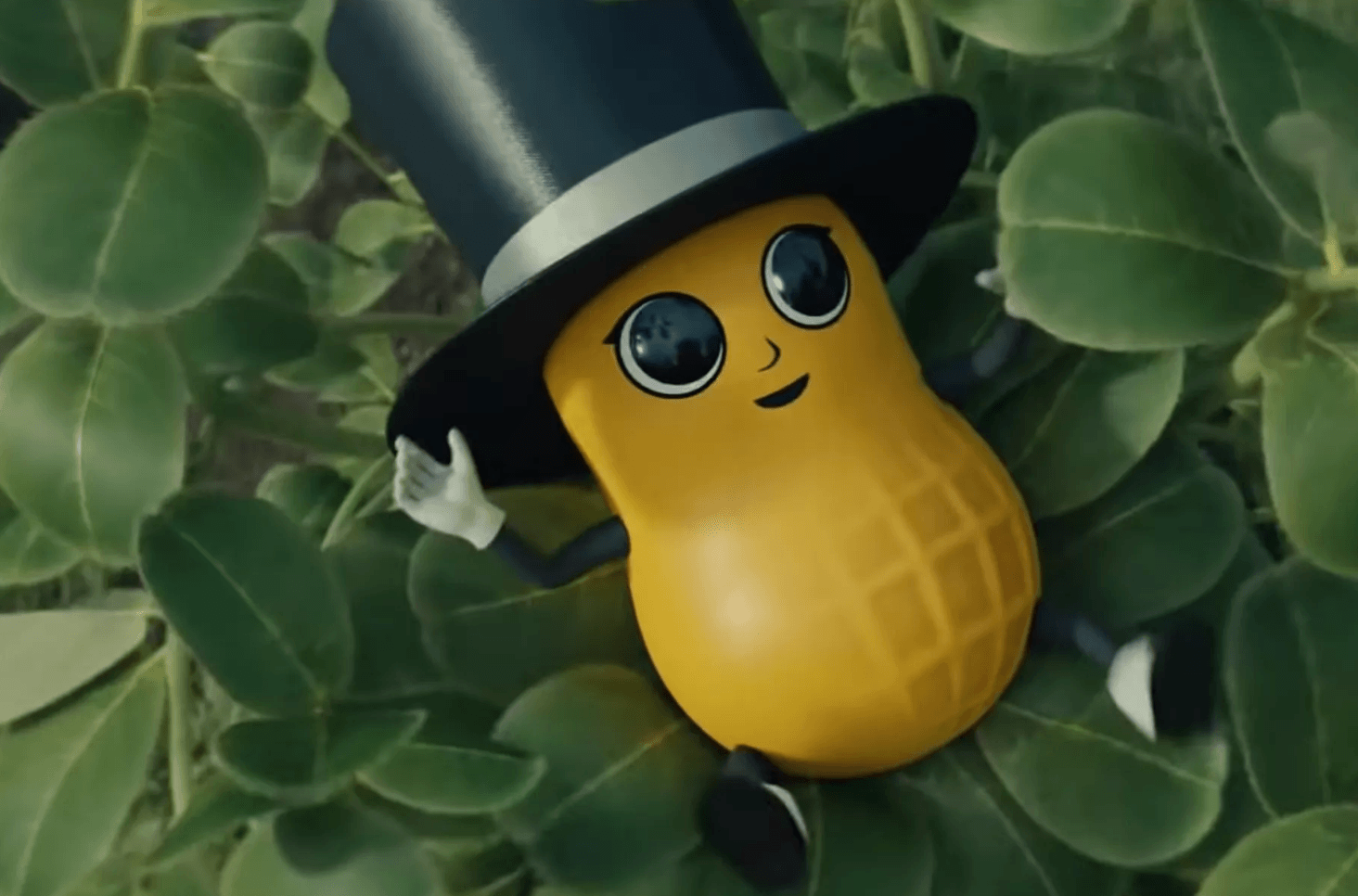
By Brooke B. Sellas, {grow} Contributing Columnist
Mr. Peanut — or should I now say Baby Nut — can teach us all a lesson in search marketing.
I know, I know. You’re probably sick and tired of hearing about which Super Bowl ads were good or bad. Or how the halftime show was “awful” (um … please let me look like JLo or Shakira when I’m their age!).
But I promise, thanks to some wicked smaht (a Super Bowl pun!) SEO friends of mine this will be a very insightful post on how to run (and not run) your campaigns. Even if they don’t cost you $6M.
(I apologize for all of the peanut puns in advance … I can’t help myself)
It Started With The Peanut Gallery
Before the Super Bowl even started, marketers went OFF about the death of Mr. Peanut.
It is with heavy hearts that we confirm that Mr. Peanut has died at 104. In the ultimate selfless act, he sacrificed himself to save his friends when they needed him most. Please pay your respects with #RIPeanut pic.twitter.com/VFnEFod4Zp
— The Estate of Mr. Peanut (@MrPeanut) January 22, 2020
This was Planters build-up to a Super Bowl commercial. Followers of the hashtag #RIPeanut were encouraged to use this to pay respect and tune in to Mr. Peanut’s funeral during the big game.
I would have to assume that Planters would put some heavy thought into all aspects of this campaign, including search marketing since they paid Super Bowl dollars for it to air. I would assume wrong, but more on that later.
Is it risky to kill off an over 100-year-old mascot? Sure.
However, a few days after the campaign launched the idea behind it was explained. Mike Pierantozzi, the Group Creative Director at Planters’ agency (VaynerMedia, btw) said they were influenced by Tony Stark’s death in Avengers: Endgame.
“We started talking about how the internet treats when someone dies — specifically, we were thinking about fictional characters, [like when] Iron Man died. When Iron Man died, we saw an incredible reaction on Twitter and on social media. It’s such a strange phenomenon.”
For the record, I LOVED that movie. I’m a total comic book nerd. I also once owned the comic where Superman died. So I get their angle.
Then, after the tragic death of Kobe Bryant and others, Planters decided to pull this campaign’s paid media efforts to be sensitive.
In a Word? Nutty.
Before I get into what went down Super Bowl Sunday, there are some other things that I think we marketers need to address. A brand strategy is not something to be taken lightly. Especially one that involves an iconic brand representative that’s been around since 1916.
1) Was it a good idea to kill off a beloved mascot?
I mean, I probably wouldn’t do it but who knows. If no PR is bad PR then I suppose this campaign is going well [insert big grimace here].
2) Shouldn’t $6M Super Bowl ads be original?
We’ve seen the reinvention of a character as a baby before, both with Groot and more recently Baby Yoda. This is one area that really marred the campaign in the court of public opinion.
Planters really out here trying to compete with the likes of Baby Groot and Baby Yoda with #BabyNut. pic.twitter.com/k92tNJVAwn
— Braddington (@bradwhipple) February 3, 2020
3) The interactive part of the campaign was roasted by viewers.
What kind of campaign would dare try to take watchers of the Super Bowl away from the game to interact with Baby Nut? This campaign, apparently. [insert eye roll and a really, really heavy sigh]
Then Came The Super Bowl (Sans Search Marketing)
Finally, Game Day arrived and many marketers were live-tweeting about #BrandBowl or #AdsBowl (hashtags to follow if you’re into IRL conversations about Super Bowl ads).
The RIP Mr. Peanut commercial came out and it was … as expected. Mr. Peanut did, in fact, die and Baby Nut was born. Some people enjoyed this. More, however, were not on board.
I outlined a few reasons above, but the biggest lesson to learn is really about all the ways in which this campaign missed out on search marketing. I was alerted to this fact on Twitter and then saw a super-smart post on LinkedIn from my friend Dan Shure (an SEO expert) talking about how things went wrong.
Apparently, none of the six-million dollar budget went to search marketing.
- There was no (apparent) organic search
- There was no (apparent) paid search (including on social channels, like Facebook)
- Just a few days ago, this website and campaign weren’t even ranking for phrases like, “Planters Super Bowl” “Planters commercial” “Planters ad” etc.
Gary V replied to my friend Dan on Twitter and said that his team didn’t create the website. But, I mean, COME ON.

Another tweet said that they “didn’t have time” to focus on search marketing because of the death of Kobe. Um, no? I’m sure the website and interactive parts of this weren’t planned in just a couple of days.
This failure feels like it goes beyond search marketing and SEO. Where was the communication between partners? Why wasn’t search marketing — from an organic or paid perspective — ever discussed by someone?
It’s one thing to get booed by ordinary people on social media. It’s a totally different flop when a key strategic component was entirely missed.
Can We Leave Search Marketing & SEO Alone Now?
“Is SEO dead?” Stop that! No! Search engine optimization is extremely important.
In fact, another friend of mine (hey, Amanda!) at Fractl found that search marketing is one of the most effective ways to reach your audience.

As the MOZ article that highlights this research from Fractl says …
Don’t let anyone tell you a channel is dead (except for maybe MySpace and other sites that are abandoned.)
What did you think about the Baby Nut campaign? And a bigger question: who you do think is responsible for leaving out search marketing? Everyone? No one? Let me know in the comments section below!

Brooke B. Sellas is the Founder & CEO of B Squared Media, an award-winning done-for-you social media management, advertising, and customer care agency. She’s also Mark Schaefer’s Co-host on the top-rated Marketing Companion Podcast. Brooke’s marketing mantra is “Think Conversation, Not Campaign” so be sure to give her a shout on Twitter!


